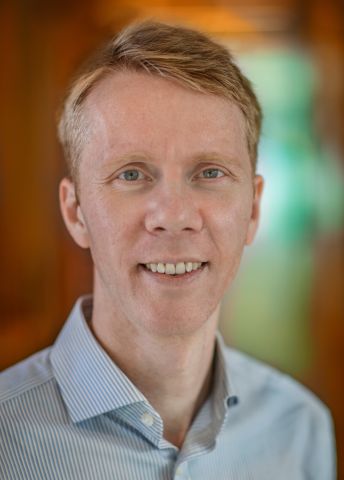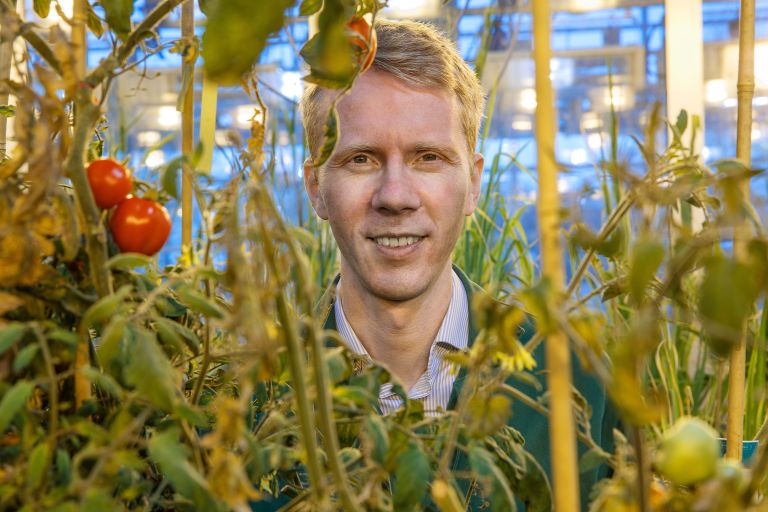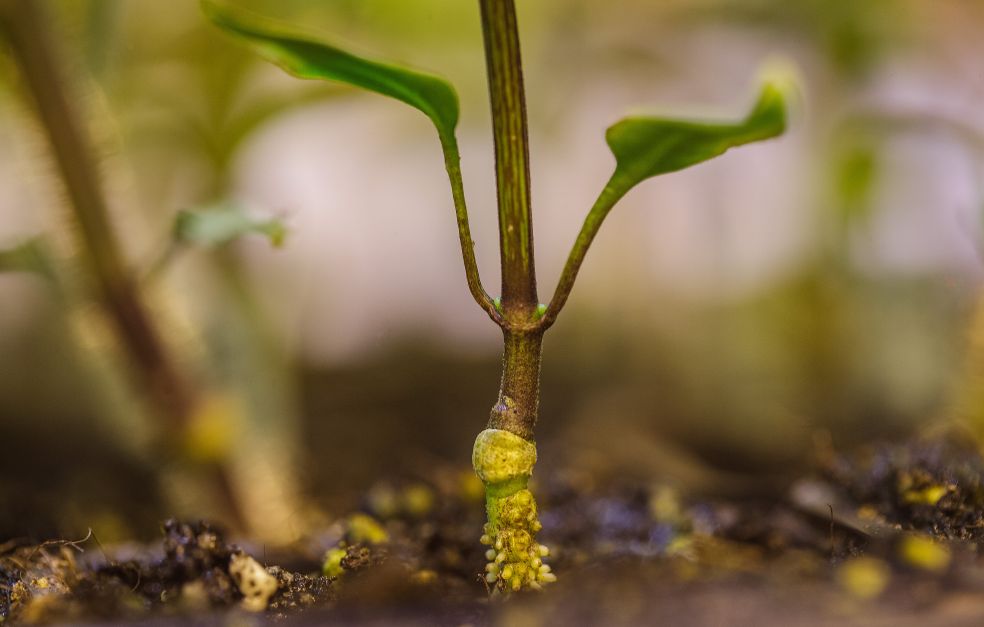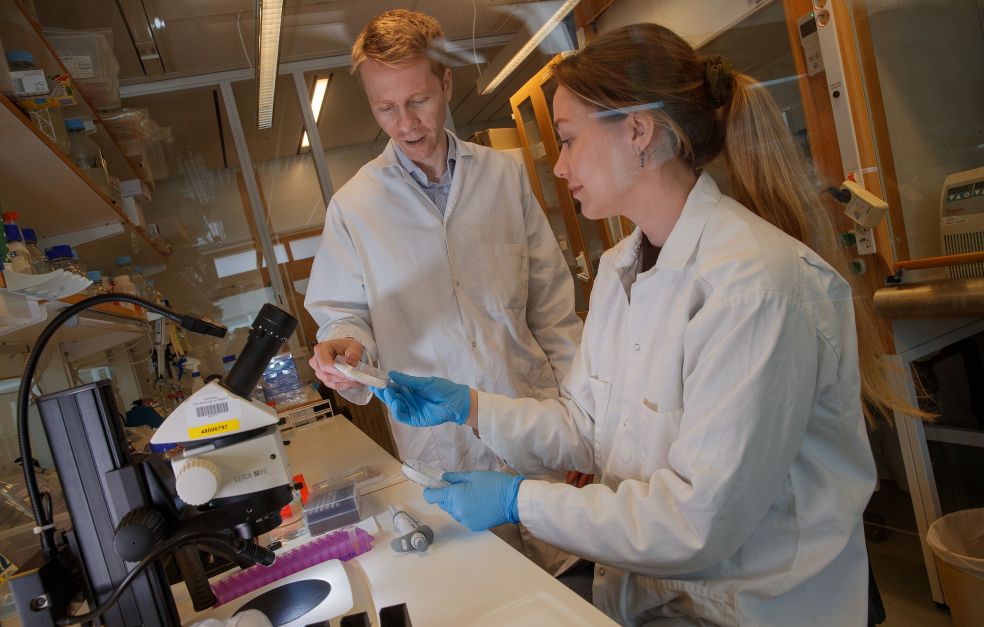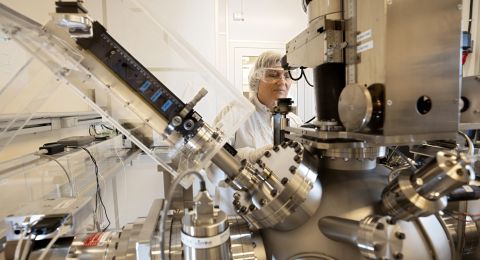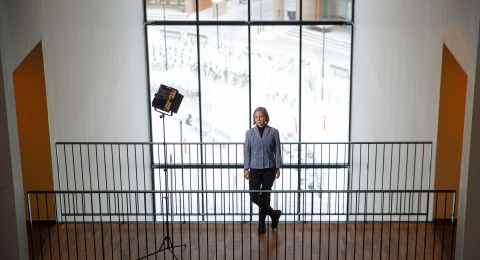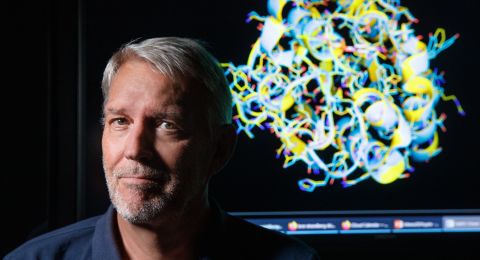Plants are constantly under attack in nature. But what determines whether they choose to defend themselves or heal their tissue? Charles Melnyk is conducting groundbreaking molecular research to understand their strategies.
Charles Melnyk
Professor of Plant Physiology
Wallenberg Academy Fellow, grant extended 2022
Institution:
Swedish University of Agricultural Sciences, Uppsala
Research field:
Plant physiology, plant regeneration and grafting, plant signaling systems and their receptors, biotic and abiotic influences
Professor Melnyk and his research team at the Swedish University of Agricultural Sciences (SLU) in Uppsala have previously concentrated on studying what happens in plants at the cellular level to refine the technique of grafting two or more plants together to form a single plant – a method used in horticulture.
Recently their research has expanded to include the way plants repair and renew their tissue, known as regeneration. This is the main focus of Charles Melnyk’s new Wallenberg Academy Fellow project, which runs until 2028.
“Trees and plants are constantly under attack. They face storms, snow, and ice. Insects and fungi can attack them, and deer can eat them. All of this causes damage. We believe the ability of plants to heal tissues is of critical importance and can be used to improve their traits,” he says. Charles Melnyk has lived in Sweden since 2017 but is originally from Canada.
Some plants are known for their ability to heal themselves. These include roses and apple trees, which have high grafting potential, as do peppers, tomatoes and cucumbers. But plants like rice or pines have a much poorer ability to regenerate.
Melnyk and his team are primarily studying thale cress (Arabidopsis thaliana) an herbaceous plant that serves as a model organism for understanding how plants function and heal themselves at the cellular level.
In one of their labs they are studying the small Arabidopsis leaves under a microscope. The leaves are placed in compartments on a tray with nutrient solution to observe how they heal. Nearly all leaves, some more than others, produce callus cells at the cut surface. These dry to form a protective “wound seal.”
Meanwhile, in the university’s basement, they are monitoring Arabidopsis plants with their delicate white flowers swaying in a growing chamber to observe how they grow. Tomato and pepper plants grafted together are being studied on the floor above, in a large greenhouse under the glare of strong fluorescent lights.
Plants make decisions
Besides grafting, growers often create more plants by dividing a single specimen into pieces and planting them in soil or nutrient solution. However, as Charles Melnyk says, it is not known exactly how regeneration occurs in the plant’s signaling system.
A key premise of his research is that when a plant is damaged, it has two options.
“The plant must decide whether to fight back using its defense mechanisms or repair the damage through regeneration. We are trying to figure out how the plant works out what to do.”
“We believe the ability of plants to heal tissues is extremely important and can be used to improve them.”
One early finding suggests that if the plant chooses renewal, it can simultaneously shut down the alternative pathway, the defense function – and vice versa – to channel energy into the chosen process.
The Uppsala researchers are attempting to put this unique knowledge to use in various ways. One involves studying specific signaling pathways and receptors plants use to fend off fungi and insects, explains Charles Melnyk.
“Plants are quite clever – they have different receptors to detect specific threats. We have also identified a particular defense receptor. If we block it, we can see that the plant regenerates better.”
Once the signaling systems in the plant’s tissues have been mapped, the researchers hope to use their newfound knowledge on regeneration to trigger the renewal process in other plants – such as rice or pines, which currently have limited regeneration capabilities.
Testing 4,000 chemicals
The researchers are also working on other approaches.
In one project, a doctoral student is adding small quantities of 4,000 different chemicals, including hormones, to Arabidopsis cultures in a lab. She is examining one substance at a time and processes about 100 chemicals a week.
“We add them to our Arabidopsis to see how it reacts. Sometimes it gets very irritated, stops growing or dies. But we hope that some of these chemicals will act as signaling substances and create a highly effective regeneration response,” says Charles Melnyk.
Provided the substance is easy to produce and non-toxic, it could potentially increase the plant’s ability to regenerate, heal and reproduce.
The professor and his team are also examining how pH levels, soil nutrients, temperature, water levels and the age of plants affect their ability to heal and grow.
Young plant tissues regenerate and heal well and are easy to graft – but not older tissues. This is a problem the researchers are now trying to understand, aiming to discover why young tissues have superior traits.
“We would like to transfer their traits to older plants so they can heal better and faster and be combined with other plants through grafting,” he says.
Text Monica Kleja
Translation Maxwell Arding
Photo Magnus Bergström
